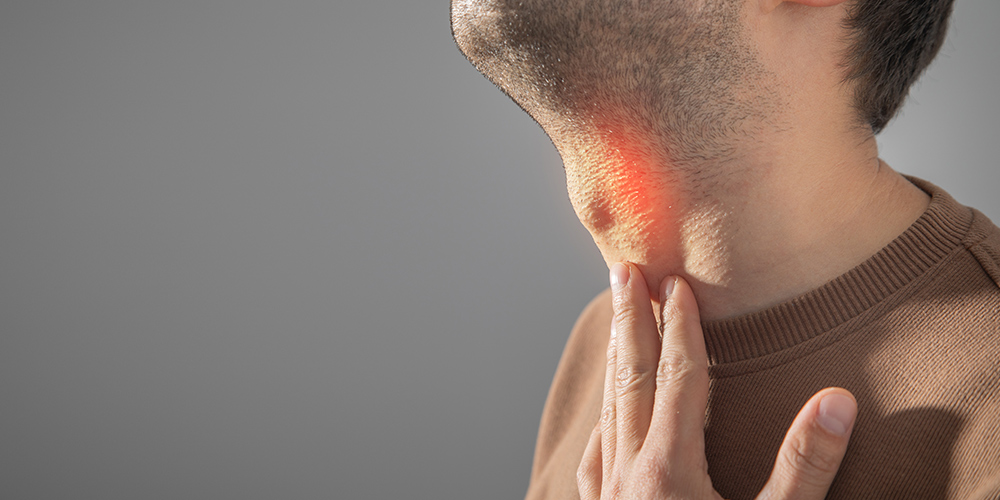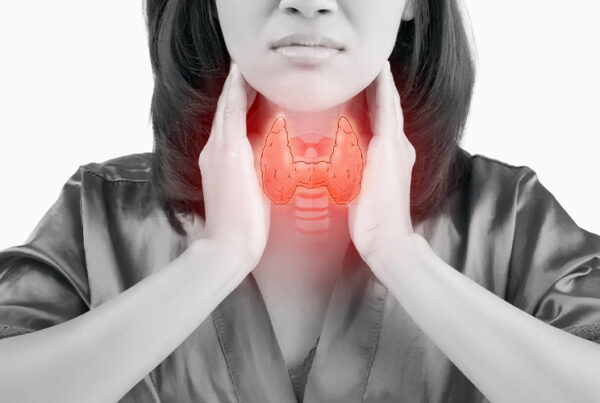
Key Takeaways:
- Parotid gland cancers begin in one of the major salivary glands that sit in front of the ears.
- Most parotid gland tumors are noncancerous, but some can become malignant.
- Common signs include a lump under the ear, facial pain, or swelling near the jaw.
- Causes are often linked to DNA changes in gland cells, radiation exposure, or certain workplace chemicals.
- Early diagnosis can improve treatment outcomes and prevent tumor spread.
Introduction
The parotid glands are the largest of the salivary glands and play an essential role in keeping the mouth moist, supporting digestion, and protecting oral health.
When abnormal cell growth occurs in these glands, it can lead to a tumor – sometimes benign, and in other cases, cancerous.
Understanding parotid gland cancers is important because their early signs often appear subtle, such as mild swelling or a small lump near the ear. Recognizing symptoms, knowing the causes, and seeking prompt medical care can help with timely diagnosis and better outcomes.
This article explores the symptoms and causes of parotid gland cancers, how they differ from other salivary gland conditions, and what patients can expect during evaluation and care.
What Is the Parotid Gland and What Does It Do?
The parotid gland is one of three major salivary glands in the human body. Located just in front of each ear and stretching toward the lower jaw, it’s responsible for producing saliva (a fluid that keeps the mouth moist and helps digest food).
Saliva also protects teeth, prevents infections, and makes swallowing easier. Together with the submandibular and sublingual glands, the parotid glands form a network that maintains the health of your mouth and throat.
Here’s a simple comparison between these glands to help you understand their anatomy better:
| Salivary Gland | Location | Main Function | Common Conditions |
|---|---|---|---|
| Parotid Gland | In front of the ears | Produces watery saliva | Tumors, swelling, infections |
| Submandibular Gland | Beneath the lower jaw | Produces thick saliva | Stones, gland blockage |
| Sublingual Gland | Under the tongue | Lubricates mouth | Cysts, inflammation |
When the parotid salivary gland develops abnormal cell growth, it can lead to swelling, discomfort, or, in rare cases, cancer
Where Is the Parotid Gland Located?
The parotid gland sits just in front of the ear, extending toward the cheek and jawline. Because of its position, changes within the gland often appear as a lump under the ear or a swollen jaw on one side of the face.
When the gland becomes enlarged, it may press against nearby nerves, sometimes causing discomfort or mild pain. Most lumps in this area are benign (noncancerous), but any persistent swelling or parotid gland pain should be examined by a healthcare provider to rule out infection, blockage, or tumor growth.
What Are the Key Symptoms of Parotid Gland Cancer?
Symptoms of parotid gland cancer can vary, depending on the size and stage of the tumor. Many patients first notice a painless lump or swelling near the ear or along the jawline. Over time, other symptoms may appear if the tumor grows or presses on facial nerves.
Common signs include:
- A firm lump or swelling on one side of the face, near the ear or cheek
- Swollen parotid gland or visible facial fullness
- Pain or tingling in the cheek, ear, or jaw area
- Numbness or weakness on one side of the face
- Difficulty opening the mouth wide or chewing
- Persistent facial discomfort or parotid gland pain
Not every swelling or lump means cancer. Some parotid gland tumors are benign and grow slowly without spreading. However, because early symptoms can resemble infections or cysts, any lump that lasts more than a few weeks should be evaluated by a doctor.
What Causes Parotid Gland Tumors?
The exact cause of parotid gland tumors isn’t always clear. These tumors start when cells in the gland begin to grow and divide abnormally. Healthy cells follow a natural life cycle – they grow, divide, and eventually die. But when the DNA inside a cell changes, it can cause the cell to grow uncontrollably.
These abnormal cells may form a parotid gland tumor, which can be either benign or malignant.
- Benign tumors (noncancerous) stay localized and don’t spread to other tissues.
- Malignant tumors, or parotid gland cancers, can invade nearby structures and, in some cases, spread to other parts of the body.
Several factors can lead to these DNA changes, including aging, prior exposure to radiation, and contact with certain industrial chemicals. Although not all causes are preventable, regular medical checkups can help detect issues early.
Who Is Risk for Developing Parotid Gland Cancer?
While parotid gland cancers are rare, some people have a higher risk of developing them.
Risk factors include:
- Age: Most cases occur in adults over 50.
- Radiation exposure: Prior radiation therapy to the head or neck area may increase risk.
- Workplace chemicals: Long-term exposure to substances used in rubber manufacturing or metal industries has been linked to a higher chance of salivary gland cancer.
- Viral infections: Certain viruses, such as Epstein-Barr virus, may slightly raise the risk.
- Chronic parotid gland swelling or inflammation: Repeated infections may irritate gland tissues over time.
Ongoing oncology research continues to study these factors, helping specialists understand who might be more vulnerable and how early detection can be improved.
How to Treat a Swollen Parotid Gland on One Side?
A swollen parotid gland on one side can have several causes from infections and blockages to tumor growth. Treatment depends on the underlying reason.
If the swelling is caused by infection, doctors may prescribe antibiotics or recommend warm compresses and hydration to improve saliva flow. For blockages due to stones or mucus plugs, gentle massage or small procedures may help clear the duct.
However, if a mass or persistent lump is found, imaging and biopsy tests are used to determine whether it’s benign or malignant. Surgical removal is often the main treatment for both noncancerous and cancerous parotid tumors. In cancer cases, additional therapies like radiation or targeted therapy may follow.
Getting medical evaluation early helps avoid complications and supports faster recovery.
What Is the Difference Between Parotid Gland Tumors and Other Salivary Gland Cancers?
The parotid glands are the most common site for salivary gland tumors, but cancer can also start in other salivary glands.
| Gland Type | Frequency of Tumors | Common Symptoms |
|---|---|---|
| Parotid Gland | Most common | Lump near ear or jaw, facial weakness |
| Submandibular Gland | Less common | Swelling under the jaw |
| Sublingual Gland | Rare | Lump under the tongue, mouth discomfort |
Most salivary gland cancers share similar features, but the location affects symptoms and treatment options. Parotid tumors are often more visible and easier to detect early, while submandibular or sublingual tumors might be hidden until they grow larger.
Understanding these differences helps doctors choose the right diagnostic and treatment approach for each patient.
Conclusion
Understanding the symptoms and causes of parotid gland cancer helps people recognize warning signs early and seek timely care. While most parotid tumors are noncancerous, any lasting lump, swelling, or facial pain should be checked by a doctor to ensure proper diagnosis.
At NHO Revive, our work in oncology research and clinical research studies in Nebraska aims to expand treatment options for rare cancers like salivary gland and parotid gland tumors. Through ongoing Solid Tumor Clinical Trials, researchers continue to study safer, more effective therapies that can improve patient outcomes.
If you or a loved one is facing a diagnosis involving the parotid gland, staying informed and exploring research-based options can make a meaningful difference in care and recovery.
FAQs
1. What does the parotid gland do?
Parotid gland produces saliva, which keeps the mouth moist, helps break down food, and protects against infection.
2. Where is the parotid gland located?
It sits in front of each ear, extending toward the cheek and jawline.
3. How to treat a swollen parotid gland on one side?
Treatment depends on the cause. Mild infections may respond to rest, hydration, or medication, while tumors may require surgery or other medical care.
4. Are parotid gland cancers common?
They’re rare but can occur at any age. Most tumors are benign, but cancerous types need prompt attention.
5. When should I see a doctor?
If you notice a lump under your ear, persistent jaw swelling, or facial weakness, consult a healthcare professional for evaluation.







